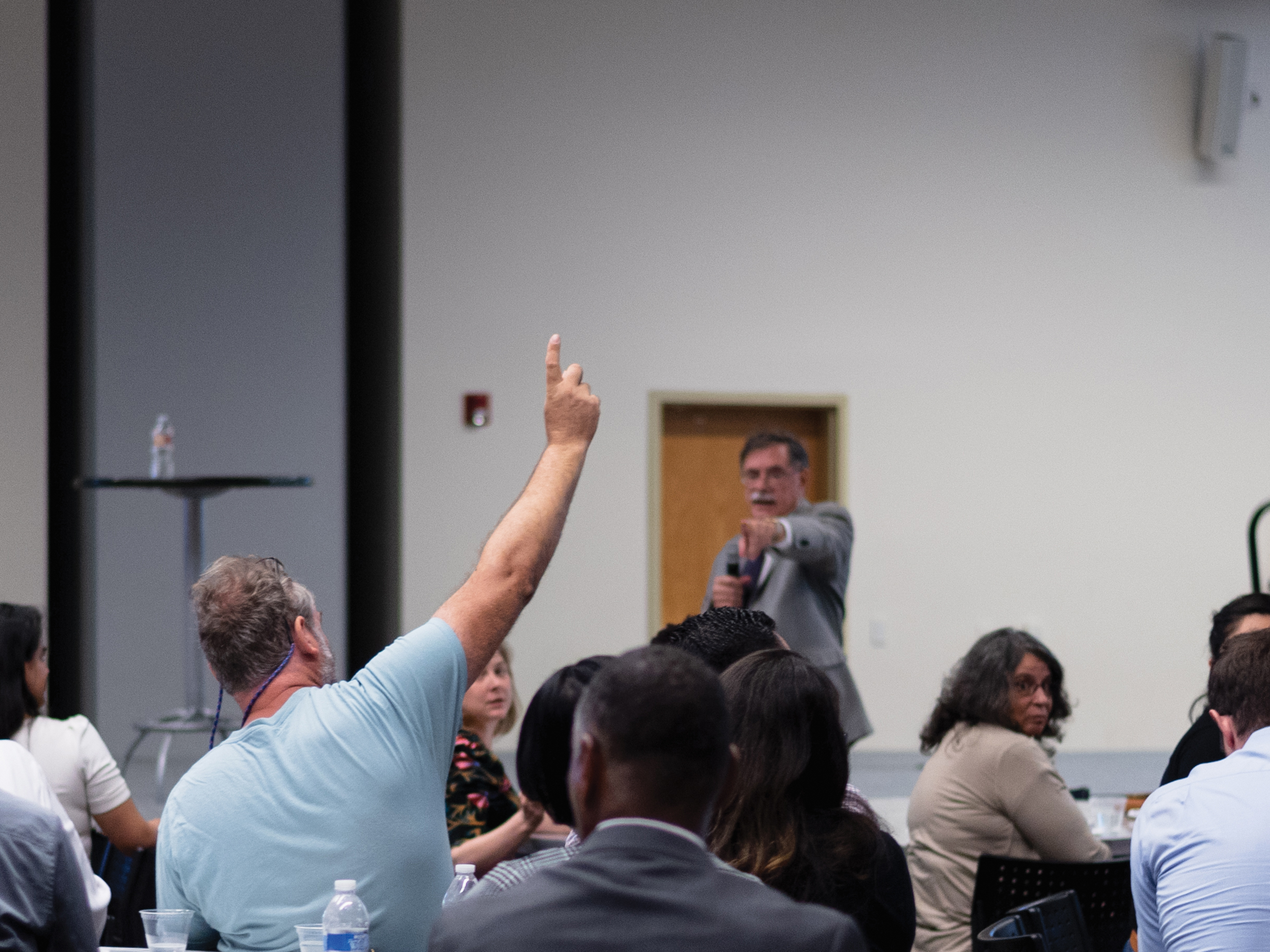On June 6, a town hall was hosted from 12-1 p.m. to discuss the proposed Riverside Unified School District (RUSD) STEM high school.
The town hall was a luncheon event with light refreshments and food being served. Chancellor Kim A. Wilcox began the event by going through a powerpoint that he stated he hoped would give people a sense of where UCR is in terms of planning for the RUSD STEM high school.
The first slide was titled, “Why Partner with RUSD on STEM High?” The slide stated that partnering with RUSD on a STEM high school aligned with UCR’s values of research, teaching and service. Wilcox also discussed how he believes partnering with RUSD to create a STEM high school demonstrates an active step toward the betterment of Riverside and the Inland Empire. The slide stated that a STEM high school would improve the quality of life for Riverside’s community members, provide opportunities for the highest quality education to people of all backgrounds and income levels and help to develop a diverse and globally constructive STEM workforce.
“There is the notion that we can change the economy and the social fabric of the community and I think that this STEM high school is a part of it,” Wilcox stated. Wilcox went on to state that he did not originally think it was wise for a university to run a high school but he stated that the RUSD STEM high school is a way for UCR to work in proximity with RUSD in order to target the pipeline of RUSD students into higher education. Wilcox stated, “We want to be in a place where the community is thriving because of our help.”
Former UCR Provost Cynthia Larive then went on to speak on the STEM high school. Larive discussed the creation of a UCR STEM high school advisory committee that is intended to explore the opportunities, challenges of the STEM high school as well as provide recommendations on how UCR can collaborate with the STEM high school. The committee is also meant to explore how UCR may possibly be able to use some of the facilities of the STEM high school. Larive however pointed out that “there will not be a reciprocal relationship in which RUSD will be able to use UCR facilities but RUSD has offered the possibility of UCR using some of their classrooms or other facilities when class is not in session.”
William Grover, an assistant professor of bioengineering at UCR as well as the committee chair of the faculty opportunities subcommittee under the STEM high school advisory committees spoke on the work that his committee is doing. Grover stated the National Science Foundation (NSF) funds between $20 to $30 million on UCR’s campus. He stated, “Anything that helps us become more competitive at winning grants from the NSF is a good thing … they will not fund our research if we do not have compelling and strong plans in place.” Having a STEM high school close to UCR’s campus, stated Grover, “will make it so much easier and more believable to the NSF to say that we will not just work with research and faculty but we will work with a nationally granted STEM high school.”
The town hall then moved on to a Q&A session. During the question and answer session, many students voiced their concerns with the timing of the town hall. Students stated that the town hall taking place during week ten made it so many students could not attend because finals week was the next week.
One student who did not provide her name then expressed her concern with the fact that the STEM high school would be in close proximity to UCR. She stated, “Why should we have students who are 13 or 14 years old interacting with students on our campus.” In response, Vice Chancellor, Planning, Budget and Administration Gerry Bomotti stated, “RUSD has still yet to select a site for the STEM high school. We are a long way away from the beginning of the construction of the site.”
Bomotti then stated that the California Environmental Quality Act alone requires at least a one-year process of review before the construction of a site can begin. After more students addressed concerns with the possibility of the STEM high school being in close proximity to UCR, Bomotti reiterated that a construction site has yet to be selected for the STEM high school. Bomotti then addressed concerns over how the STEM high school may impact the finances and allocation of resources at UCR. He stated, “The STEM high school will have no change on UCR’s finances. We will not be allocating money or resources to the high school. The one thing that we would be giving up is land and space.”
In response to Bomotti’s statement, Rick Redak, the current chair of the Department of Entomology stated, “There is nothing wrong with having a STEM high school but why do we want it on our campus? UCR is already increasing our enrollment and yet we are giving away more space and land.” In response, Mary Droser, the on-campus liaison for the STEM high school, emphasized that she believes that the high school will be advantageous for UCR.
The town hall concluded at 1:06 p.m. 







